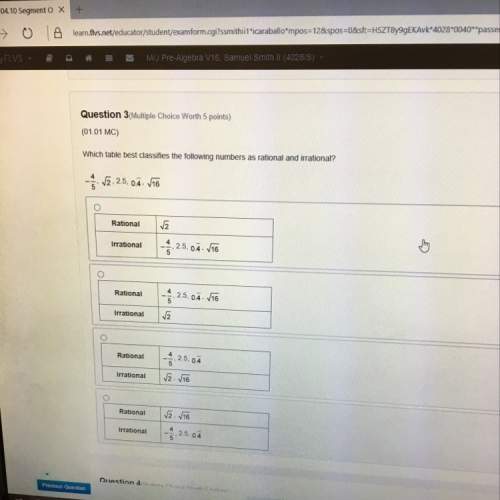
Mathematics, 08.11.2019 20:31 terriblexsiren
Triangle efg undergoes a dilation centered at the origin. the result is triangle e'f'g'. which rule describes the dilation? a) (x, y) → (2x, 2y) b) (x, y) → (4x, 4y) c) (x, y) → (1 4 x, 1 4 y) d) (x, y) → (−4x, −4y)


Answers: 2
Another question on Mathematics

Mathematics, 21.06.2019 21:00
Rewrite the following quadratic functions in intercept or factored form. show your work. f(x) = 3x^2 - 12
Answers: 1

Mathematics, 22.06.2019 01:00
Atriangle has side lengths of x, x+11, and 3x+5. what is the perimeter?
Answers: 1

Mathematics, 22.06.2019 01:20
Describe how to determine the average rate of change between x = 4 and x = 6 for the function f(x) = 2x^3 + 4. include the average rate of change in your answer.
Answers: 3

Mathematics, 22.06.2019 02:00
Keith runs 5 miles in 38 minutes. at the same rate, how many miles would he run in 57 minutes
Answers: 1
You know the right answer?
Triangle efg undergoes a dilation centered at the origin. the result is triangle e'f'g'. which rule...
Questions


Mathematics, 11.04.2020 05:13

Mathematics, 11.04.2020 05:13

Business, 11.04.2020 05:13


Mathematics, 11.04.2020 05:13

Mathematics, 11.04.2020 05:13

Mathematics, 11.04.2020 05:13

Geography, 11.04.2020 05:13

Mathematics, 11.04.2020 05:13





Social Studies, 11.04.2020 05:13

Mathematics, 11.04.2020 05:13







